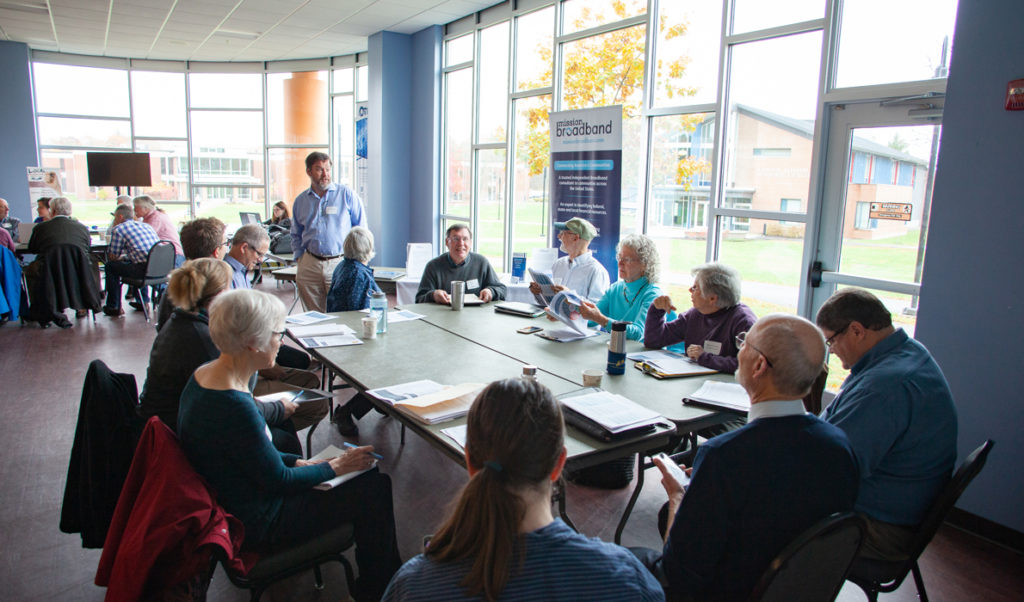By Tom Groening
Public spending to bring high-speed internet—also known as broadband—to rural Maine is not on the horizon. Not yet, anyway.
Broadband proponents argue that bringing this infrastructure to remote corners of the state is comparable to how electricity was brought to pockets of the country in the 1930s. The federal government invested in rural electrification, which improved both the economic prospects and quality of life for many in such regions as Appalachia.
At the Maine Broadband Coalition’s Oct. 28-29 conference at Thomas College in Waterville, the elephant in the room was the failure of the state legislature to move a $100 million bond before voters that would have funded bringing broadband to underserved areas. Grants would have been distributed by the ConnectMe Authority, a state entity.
The bond failed to get enough votes to be put on the November ballot, with Republicans voting against the plan. That failure was not discussed overtly at the conference, but those attending discussed other ways communities can bring broadband to residents and businesses.
Bill Coleman, a featured speaker from Community Technology Advisors of St. Paul, Minn., noted that broadband is valued elsewhere in the world.
“Finland has declared broadband a human right,” he said. “Access denied is opportunity denied.”
He also cited a study showing that children with poor connectivity in their homes have lower grades in school, are less likely to pursue STEM education (science, technology, engineering, mathematics), and less likely to attend college.
Coleman urged those attending the conference—many of whom represented small communities seeking to establish high-speed internet—to be flexible and find their own path toward a solution. As a reminder of that, his firm often uses the expression, “When you’ve seen one rural community, you’ve seen one rural community.”
Heather Johnson, commissioner of the Department of Economic and Community Development, which pushed for the broadband bond, spoke to the conference, admitting that her understanding of the issue has evolved. Previously, she said, it was enough to know that broadband service needed to be extended throughout the state. Now, Johnson said, focus is brought on the nuances of how to best provide the service.
“The technology isn’t what’s changed,” she said. “I think the dialogue has changed (to) what it takes to make this work.” The focus must be on “how communities drive their own desires and needs.”
Johnson cited the western Maine town of Jackman as an example of how broadband can reduce the cost of living. With the nearest hospital 75 miles away, broadband could allow residents to have video conferencing visits with health care providers. Educational opportunities also could be expanded, with students having access to such studies as foreign languages.
In panel discussions, representatives of the rural communities of Bowdoinham, Cliff Island, and Islesboro shared how they built public support for bringing in broadband service.
Some of the highlights included:
- Be transparent in explaining the plan
- Identify a “community champion” to lead the campaign
- Work on securing a high “take rate;” i.e., getting residents to commit to signing up for the service in advance of it being available.
Laurie LaChance, president of Thomas College, welcomed conference participants and noted that Maine’s “greatest assets are often the things that hold us back,” such as being fair, even if it means spreading resources too thin; being frugal, which can mean work isn’t fully funded; and being humble to a fault.
In 1900, 80 percent of U.S. workers were in the agricultural or natural resource extraction sectors, LaChance said. In 1945, half the work force was in manufacturing. After the rise of the service economy, the next economic wave is the “global, technology-based, knowledge economy,” which relies on broadband, she said.





